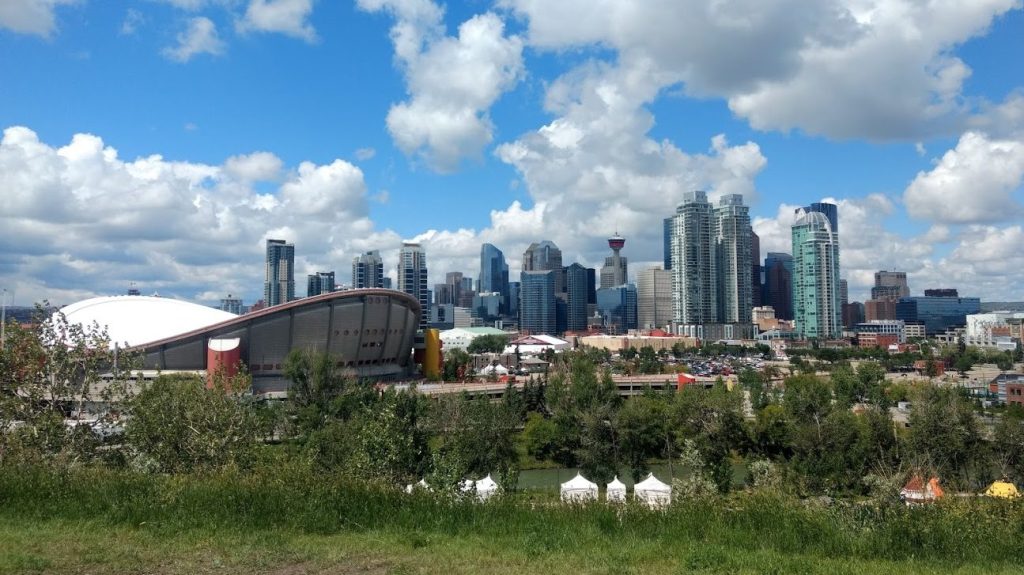What’s it really like in Montreal these days? A day in the life of a city in crisis
Posted May 25, 2012 5:00 am.
This article is more than 5 years old.
MONTREAL – When Montrealers wake up these days, the morning calm of the city streets can make the previous night seem like a distant dream.
Gone are the perpetual facts of life for anyone near the city centre each night: the rumble of low-hovering helicopters, the makeshift barricades, the riot police, the taunts and chants from the tide of thousands of marching protesters.
The suburbs remain quiet. Even the downtown core returns to the regular rhythm of most other urban centres — at least for another 12 hours.
People seeing sensational images from Montreal, now being beamed on newscasts around the world, are witnessing only one small sliver from a day in the life of a city in crisis.
On the morning subway commute, bleary-eyed Montrealers flip through the free dailies answering questions they might be asking about the previous night’s events: How many were arrested last night? How many windows were broken?
Some shake their heads in disbelief. Only a small minority of morning metro commuters will be wearing the emblematic red patch of the student movement.
Around noon, groups of co-workers might head out for lunch and catch the latest details of the strike from a 24-hour news channel on the TV hanging on a cafe wall.
They will make quips about the government minister seen answering reporters’ questions. They will do the same during a competing news conferences from the student groups blasting Premier Jean Charest and the police.
The day is still young.
In the afternoon, there is water-cooler talk about the lighter side of the protests. Some might be idle gossip about the key players — such as who’s better-looking: the mild-mannered Leo Bureau-Blouin, head of the college students’ association? Or the more strident Gabriel Nadeau-Dubois, spokesperson for the hardline student group C.L.A.S.S.E.?
Or, as someone tweeted Thursday: “You know the conflict has gone on too long when you notice that Bureau-Blouin got a haircut.”
As the day drags on, the mood changes.
A bartender might see a thinner-than-usual happy-hour crowd, and wonder what’s in store for the coming festival season that in most years motors Montreal’s summer economy.
Many commuters have been desperate to avoid the downtown core lately. By 8:30 p.m. it will be taken over by the nightly student march, which begins in the same park every night and whose unpredictable path winds onto the same streets, but at different times, in a different order.
Patrons in bars and restaurants might applaud as the march makes its way past. The process can last more than 15 minutes. While some stand to applaud, others will exchange furtive glances or stare into their plates and quietly mutter.
Around dinner tables some parents will argue with children. Even friends will debate each other fiercely, on Facebook and Twitter, or over beers on one of Montreal’s many restaurant patios.
“Are you a red, green or white?” is one common question, referring to the colours that represent various positions on the strike.
Throughout the dispute, protesters have thought up some novel tactics.
The latest innovation, borrowed mainly from protests in the Spanish-speaking world, has been to organize noisy pot-banging processions in Montreal’s residential areas.
It has been dubbed the casserole-dish protest — from the Spanish “cacerolzados,” made popular in Chile in the 1970s.
Every night at 8 p.m., even streets in quiet neighbourhoods will spring to life with the clamour of neighbours gathering on balconies, leaning out of windows and milling about on sidewalks — all of them striking various kitchen implements.
With the racket reaching an ear-rattling crescendo, one neighbour recently asked another in the Plateau neighbourhood: “How long are we supposed to do this for?”
At the outset, the casserole-dish protest was largely contained to the Plateau, a trendy enclave near downtown where seemingly every second person wears the red patch to signal their support for the strikers.
But on Wednesday, there was a burst of reports on Twitter about neighbourhoods in working-class Verdun, Rosemont and Little Italy also taking part.
At one point there were at least three separate pot-banging marches making their way through Montreal. Residents rushed to join with brass instruments, wind chimes, and anything else that would up the decibel level.
Some vehicles, many of them family cars, honked in support as the marchers clogged intersections. Meanwhile, less supportive motorists would angrily rev their engines or try forcing their way through the masses.
The larger march, meanwhile, will be rippling through the downtown streets farther south. It usually remains peaceful, if troublesome for anyone stuck in traffic.
But the crowd thins, leaving behind the more hard-line protesters. Many of them are wearing masks. Projectiles are thrown at riot police. They include stones, bottles, sticks and, on the rarest night, even a Molotov cocktail might be tossed onto the street.
Commercial windows — particularly those of banks — will get smashed.
Tear gas is fired. Arrests are made. Sometimes police will exchange angry words with bystanders who gets too close, blast some with pepper spray, or shove them with a baton.
This week, hundreds were also arrested under a controversial tactic known as “kettling.” That included many people who said they were just wandering by.
After being penned into a small area, hundreds were handcuffed and sent onto the regular city buses being used as makeshift police holding pens.
The air in the downtown core, and the neighbourhoods near it, will vibrate from the sound of police and media helicopters rumbling so noisily that some people say they can’t sleep.
Eventually the gas clears. The broken glass is swept off sidewalks. The helicopters fly away.
And Montreal gets ready to do it all over again.










